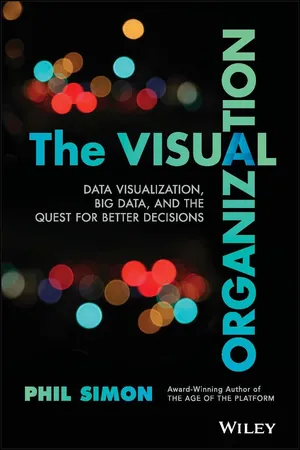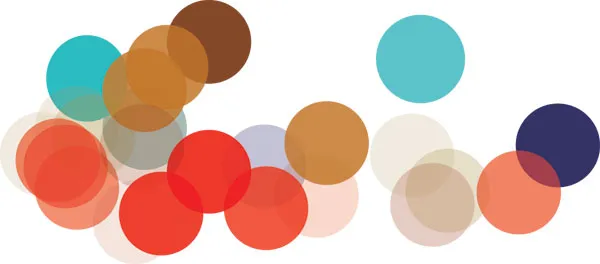
The Visual Organization
Data Visualization, Big Data, and the Quest for Better Decisions
- English
- ePUB (mobile friendly)
- Available on iOS & Android
About this book
The era of Big Data as arrived, and most organizations are woefully unprepared. Slowly, many are discovering that stalwarts like Excel spreadsheets, KPIs, standard reports, and even traditional business intelligence tools aren't sufficient. These old standbys can't begin to handle today's increasing streams, volumes, and types of data. Amidst all of the chaos, though, a new type of organization is emerging. In The Visual Organization, award-winning author and technology expert Phil Simon looks at how an increasingly number of organizations are embracing new dataviz tools and, more important, a new mind-set based upon data discovery and exploration. Simon adroitly shows how Amazon, Apple, Facebook, Google, Twitter, and other tech heavyweights use powerful data visualization tools to garner fascinating insights into their businesses. But make no mistake: these companies are hardly alone. Organizations of all types, industries, sizes are representing their data in new and amazing ways. As a result, they are asking better questions and making better business decisions. Rife with real-world examples and case studies, The Visual Organization is a full-color tour-de-force.
Frequently asked questions
- Essential is ideal for learners and professionals who enjoy exploring a wide range of subjects. Access the Essential Library with 800,000+ trusted titles and best-sellers across business, personal growth, and the humanities. Includes unlimited reading time and Standard Read Aloud voice.
- Complete: Perfect for advanced learners and researchers needing full, unrestricted access. Unlock 1.4M+ books across hundreds of subjects, including academic and specialized titles. The Complete Plan also includes advanced features like Premium Read Aloud and Research Assistant.
Please note we cannot support devices running on iOS 13 and Android 7 or earlier. Learn more about using the app.
Information

PART ONE
Book Overview and Background
- Introduction
- Chapter 1: The Ascent of the Visual Organization
- Chapter 2: Transforming Data into Insights: The Tools
Introduction
It’s not what you look at that matters, it’s what you see.—Henry David Thoreau
ADVENTURES IN TWITTER DATA DISCOVERY
Table of contents
- Cover
- Praise
- Series
- Titlepage
- Copyright
- Other Books by Phil Simon
- Dedication
- Chronology
- List of Figures and Tables
- Preface
- Acknowledgments
- How to Help This Book
- Part One: Book Overview and Background
- Part Two: Introducing the Visual Organization
- Part Three: Getting Started: Becoming a Visual Organization
- Part Four: Conclusion and the Future of Dataviz
- Afterword: My Life in Data
- Appendix: Supplemental Dataviz Resources
- Selected Bibliography
- About the Author
- Index